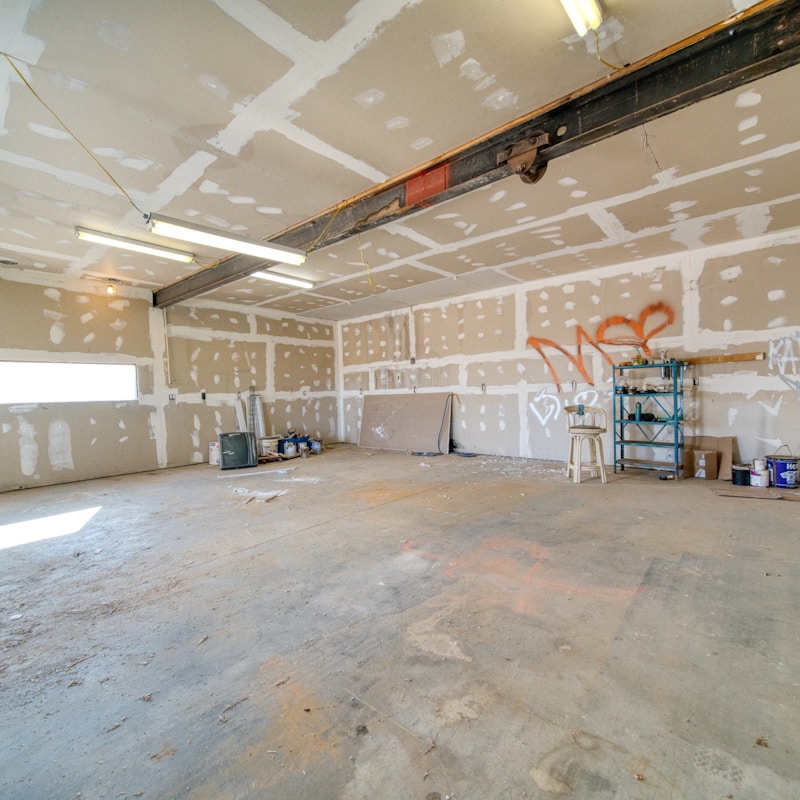Ultimate Guide to Finding Drywall Repair Near You
When it comes to home repairs, drywall issues can feel overwhelming, especially if you’re not sure where to start. Finding the right contractor may seem like searching for a needle in a haystack— daunting and time-consuming. But fear not! This guide is here to illuminate your path as we dive into tips for navigating the often tricky terrain of drywall repair services. Whether you're dealing with small blemishes or bigger problems, understanding how to assess your needs, identify damage types, and choose qualified help will streamline the process and keep your home looking great. So grab a cup of coffee, settle in, and let’s get you on your way to finding that perfect drywall repair professional!
To find drywall repair services near you, start by searching online directories, such as Yelp or Angie's List, where you can read reviews and compare ratings. Additionally, asking for recommendations from friends or neighbors who have used drywall repair services can also lead you to trustworthy professionals in your community.
Assessing Your Drywall Repair Needs
Before you can hire a contractor, it’s crucial to have a clear understanding of the kind of repairs your drywall requires. Each type of damage can require a different approach, and knowing the extent of these issues helps set you up for success.
Steps to Assess Damage
Visual Inspection: This initial step is foundational. Walk around your home and look for any cracks, holes, water stains, or bulges on your walls and ceilings. These signs can tell you much about what’s happening beneath the surface. For example, large cracks might indicate structural issues, while small blemishes could be more cosmetic.
Tap Test: After visually inspecting your drywall, conduct a tap test. Gently tap on various areas of the wall with your knuckles. If you hear hollow sounds, this might indicate that there's underlying damage or loose materials, which could contribute to further problems if left unaddressed.
Moisture Check: If you suspect the possibility of water damage—usually indicated by discoloration or peeling paint—a moisture meter can be invaluable. A moisture meter will help identify any hidden moisture that may lead to mold growth or weaken the integrity of your drywall over time.
Documentation: As you go through these steps, take clear photos of all the damage. This way, when you reach out to contractors for quotes, you'll be able to provide them with precise evidence of what needs repair. Sharing this documentation will ensure they understand the scope of the job from the outset.
With an accurate assessment in hand, you’ll be equipped to recognize the types of damage and select appropriate repair strategies.
Understanding whether you're dealing with simple cosmetic issues versus extensive structural problems can make all the difference in how you engage with contractors. If your damage is predominantly superficial, meaning just a few nail holes or minor cracks, most contractors should be able to handle it quickly without extensive planning or material changes.
Conversely, if you're facing potential water damage or significant structural concerns—it’s critical that you hire someone experienced who knows how to address these challenges holistically.
By evaluating the scope of the damage now, you'll be better prepared to navigate essential considerations as you explore repair methods moving forward.
Identifying Types of Damage
When it comes to drywall, not all damage is created equal. Different types of damage require different approaches for repair. Recognizing the specific type of damage helps you make informed decisions about whether a simple DIY fix will suffice or if it's time to call in the professionals.
Common Types of Drywall Damage
Let's explore some of the most prevalent types of drywall damage that homeowners encounter.
Hairline Cracks are common issues found on walls and ceilings. They often form due to the natural settling of a house or minor stress fluctuations in the drywall material itself. While they may seem alarming at first, these cracks are usually superficial and can be treated with a bit of spackling compound and paint touch-up. Regularly checking for these cracks as part of your home maintenance can help catch them early before they expand.
Next up, we have small holes—those pesky little marks you often get from nails or screws. If these holes are less than 1 inch in diameter, don't worry too much; they rarely indicate underlying problems and can typically be filled quickly with a simple patching compound or even some leftover paint. Think of it as giving your wall a little TLC every now and then.
On the other hand, large holes can present a more significant challenge. These are frequently the result of accidents, such as doorknobs making an unnecessary acquaintance with the wall, or renovations that required cutting into existing drywall. These holes require more extensive repairs, involving patching pieces into place that match the surrounding surface. If you're unsure about how to make those repairs seamlessly, a skilled contractor can bring back that smooth finish.
Water damage is another serious concern that homeowners must be vigilant about. It often manifests through stains or swelling on the wall, accompanied by musty odors—a telltale sign that moisture has invaded your home’s interior structure. Water-damaged drywall may need replacing and calls for an investigation into what caused it to ensure that any leaks are properly addressed.
Lastly, mold is an issue that demands caution and care. Mold growth is a sign of prolonged moisture exposure and can lead to health risks if disturbed improperly. If you suspect mold within your drywall, it's advisable to involve professionals who can assess its reach and recommend safe removal methods.
After identifying the nature and extent of your drywall issues, it's essential to consider your own capabilities versus those offered by seasoned professionals as you move forward with restoration efforts.
